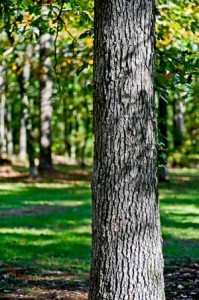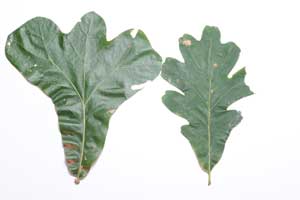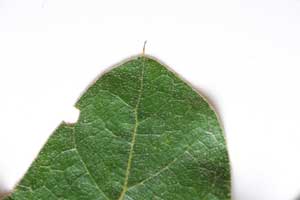As a forester, I field plenty of questions from friends and acquaintances about trees in general. However, by far the most common question is “how can I tell the difference between red oaks and white oaks?” Well, here’s how.
Oaks are in the beech family and in the genus Quercus which is the very literal Latin word for “oak tree.” The oaks are identified as belonging to one of three different subdivisions: the white, red, and intermediates. Only the red and white oak groups are found in North America. I don’t know the real reason white oaks are named such except that the namesake of the group Quercus alba (alba means “white” in Latin) has a white bark. However, the underside of the leaf is whitish as well. In addition, the namesake red oak Quercus rubra (yep, rubra means “red” in Latin) has a reddish wood, a red/orange inner bark, and its leaves turn a brilliant to rusty red in the fall. So, you see the problem?
An interesting fact about oaks is that from the time red oaks bloom, to the drop of the acorn, is two years. If those acorns aren’t eaten by squirrels, deer, raccoons, turkeys, wild hogs, and any of the other numerous species that eat oak acorns, when they drop to the ground, then they will sprout the following spring. The white oaks, on the other hand, bloom in the spring, grow acorns, and drop them in the fall of the same year. When those acorns drop to the ground, they immediately begin the sprouting process and try to establish a beginning root system before winter sets in.
There are some major differences between the two groups and some more subtle ones. Although the wood can sometimes prove difficult to distinguish, especially if it was flatsawn, bark, leaves, and acorns are very useful in telling the difference between live trees of the two groups.
Aside from the obvious whitish bark of the White Oak and Swamp Chestnut Oak (both white oaks) and the darker bark of the Northern Red Oak, Cherrybark Oak, and Blackjack Oak (all red oaks), the leaves are the telltale indicator between the two groups. Look closely at the two oak leaves in this picture.
You have to look closely to find the one sign that quickly distinguishes the red oaks from the white. At the tip of a red oak leaf or the lobes of the leaf, you’ll find a spine or bristle.
They may be almost microscopic, or very visible; however, you will never find them on a white oak leaf. So, as simple as it sounds, THAT’s how you tell the difference between a red oak tree and a white oak tree.
Next time we will attempt to find the difference between the wood of the two oak groups. See you then!








